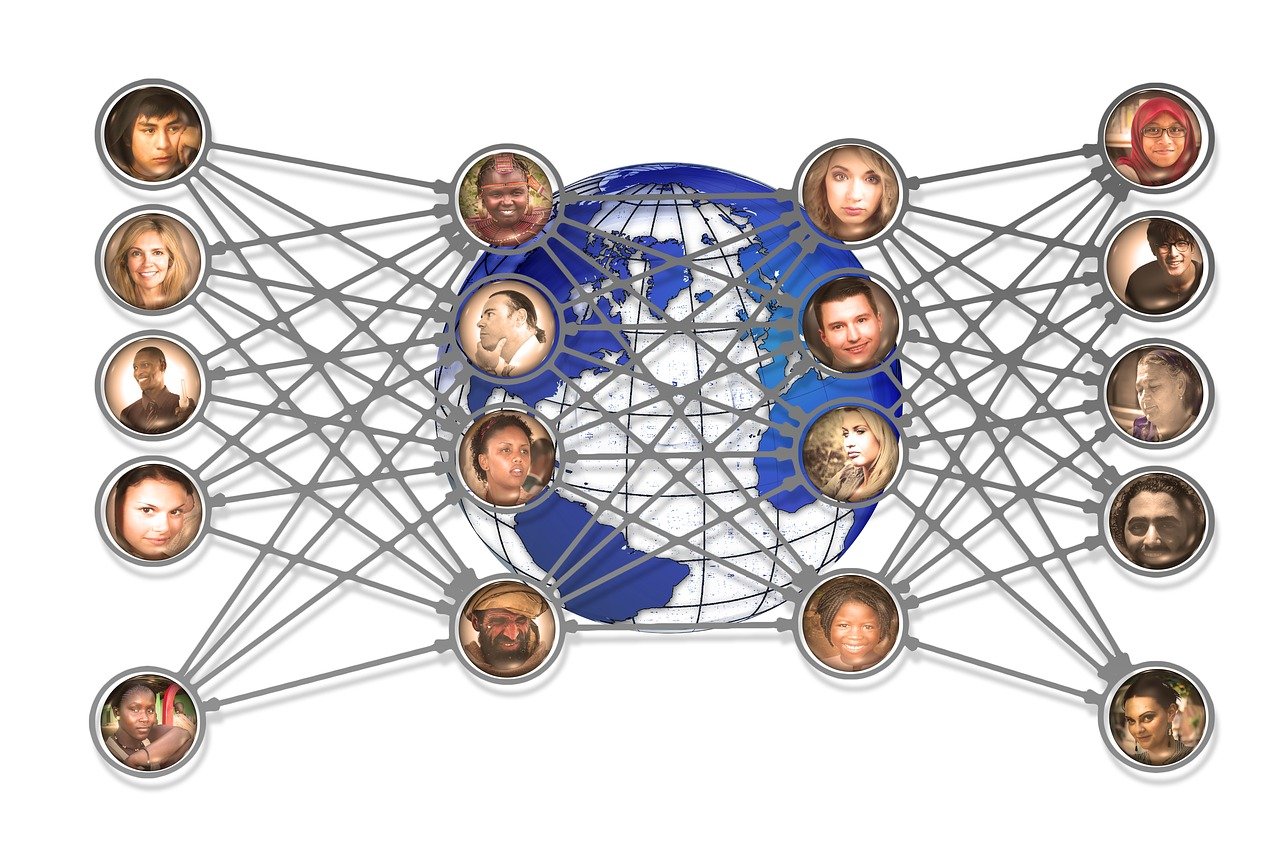
Exploring the Latest Developments in Cloud Gaming: A New Era for Gamers
The gaming industry has seen a significant transformation over the past few years, with cloud gaming emerging as a revolutionary trend. As technology advances, gamers are no longer restricted by hardware limitations, enabling a seamless gaming experience across various devices. This article delves into the latest developments in cloud gaming, examining how they are reshaping the gaming landscape and what they mean for the future of this vibrant industry.
The Rise of Cloud Gaming: A Brief Overview
Cloud gaming, also known as gaming-as-a-service, allows users to play games streamed from the cloud rather than relying on local hardware. This concept eliminates the need for high-end gaming consoles or PCs, enabling players to access their favorite games on a myriad of devices, including smartphones, tablets, and smart TVs.
Cloud gaming services like Xbox Cloud Gaming and NVIDIA GeForce Now have been at the forefront of this shift, offering extensive game libraries and cutting-edge technology that provide a console-like experience without the need for physical hardware. As these services continue to expand and improve, they are bringing significant changes to how games are played and consumed.
Technological Advancements Driving Cloud Gaming
A major factor behind the growth of cloud gaming is the advancement in technology. High-speed internet, 5G connectivity, and powerful data centers are crucial components that support the infrastructure of cloud gaming platforms. These technologies ensure that games can be streamed with minimal latency and high-quality graphics, offering users an experience comparable to traditional gaming setups.
5G, in particular, has been a game-changer, offering faster data transfer rates and lower latency. With the widespread adoption of 5G technology, gamers can enjoy a more responsive and immersive experience, even when playing graphically intensive games on the go.
The Impact on Game Development and Distribution

Cloud gaming is not only changing how games are played but also influencing game development and distribution. Developers are now focusing on creating games that are optimized for streaming, which involves different considerations compared to traditional game development. This includes ensuring that games can run smoothly on various devices and internet speeds.
Furthermore, cloud gaming platforms provide developers with a new avenue for distribution. Instead of relying solely on physical sales or downloads, developers can reach a broader audience by hosting their games on cloud services. This shift is democratizing access to games, allowing indie developers to compete on a more level playing field with established studios.
Challenges and Concerns in Cloud Gaming
Despite the promising future of cloud gaming, several challenges and concerns need addressing. One of the primary issues is the reliance on a stable internet connection. In regions with limited or unreliable internet access, cloud gaming may not be a viable option. Additionally, data privacy and security remain significant concerns, as players’ personal information and gaming data are stored in the cloud.
Another challenge is the potential environmental impact. Data centers that support cloud gaming consume significant energy, raising concerns about their carbon footprint. However, many companies are exploring sustainable practices to mitigate these effects, such as using renewable energy sources and improving energy efficiency.
Cloud Gaming and the Future of the Gaming Industry
Cloud gaming is poised to become a dominant force in the gaming industry, with predictions indicating that it could eventually surpass traditional gaming models. As more companies invest in cloud gaming infrastructure and technology, the quality and accessibility of these services are expected to improve further.
This shift could lead to a more inclusive gaming community, where players from diverse backgrounds and regions can access high-quality gaming experiences without the barrier of expensive hardware. Furthermore, as cloud gaming evolves, it could pave the way for new genres and innovative gameplay mechanics, pushing the boundaries of what is possible in the gaming world.
Conclusion: Embracing the Cloud Gaming Revolution

In conclusion, cloud gaming is ushering in a new era for gamers, characterized by greater accessibility, convenience, and innovation. As technology continues to advance and overcome the current challenges, cloud gaming has the potential to transform the gaming landscape fundamentally. For gamers, developers, and industry stakeholders, this is an exciting time to explore the possibilities that cloud gaming offers and embrace the changes it brings to the world of gaming.
Whether you’re a casual player or a hardcore enthusiast, the future of gaming is in the cloud, offering endless opportunities to connect, compete, and create in ways never before imagined. As we move forward into this new era, it’s clear that cloud gaming is not just a trend but a pivotal shift in how we experience and interact with games.
Cloud Gaming’s Influence on Player Engagement and Community Building
One of the most exciting aspects of cloud gaming is its potential to enhance player engagement and community building. With games becoming more accessible than ever, players from around the world can connect and play together, fostering a more global and inclusive gaming community.
Cloud gaming platforms often include social features that allow players to share their experiences, stream gameplay, and collaborate in real-time. These features encourage interaction and camaraderie, contributing to a vibrant and dynamic gaming culture. As more people join these communities, developers are incentivized to create games that cater to diverse tastes and preferences, further enriching the gaming ecosystem.
The Role of Artificial Intelligence in Cloud Gaming
Artificial intelligence (AI) is playing a crucial role in the development and optimization of cloud gaming services. AI algorithms help improve streaming quality by dynamically adjusting video resolution and frame rates based on the user’s internet connection. This ensures a smooth and enjoyable gaming experience, even under suboptimal network conditions.
Moreover, AI is being integrated into game design, offering more personalized and adaptive gameplay experiences. By analyzing player behavior and preferences, AI can tailor game content to suit individual playstyles, increasing engagement and satisfaction. As AI technology continues to evolve, its impact on cloud gaming is expected to grow, opening up new possibilities for interactive and immersive gaming experiences.

Economic Implications of Cloud Gaming
The economic implications of cloud gaming are significant, affecting various stakeholders within the industry. For gamers, cloud gaming offers a cost-effective alternative to purchasing expensive gaming hardware. This democratization of access can lead to increased player numbers and, consequently, higher revenue for developers and service providers.
For developers, cloud gaming presents a lucrative opportunity to reach a wider audience and generate ongoing revenue through subscription models and in-game purchases. By reducing the reliance on physical media and distribution channels, developers can allocate more resources to game development and innovation.
Service providers, on the other hand, are investing heavily in infrastructure to support the growing demand for cloud gaming. This investment is expected to drive competition and innovation, leading to better services and more competitive pricing for consumers.
Potential for Cross-Platform Experiences
Cloud gaming is paving the way for seamless cross-platform experiences, allowing players to switch between devices without losing progress. This flexibility enhances the gaming experience by providing players with the freedom to play their favorite games on any device, anytime, and anywhere.
Developers are increasingly adopting cross-platform play, enabling players using different devices to compete or collaborate in the same game environments. This trend is fostering a more unified gaming community and breaking down barriers between different gaming ecosystems.
Conclusion: The Future is Bright for Cloud Gaming
As we look towards the future, it’s evident that cloud gaming is set to be a major force in the gaming industry. Its ability to democratize access, enhance player engagement, and foster innovation makes it a powerful catalyst for change. The continued advancements in technology and infrastructure will only serve to strengthen its position as a preferred gaming option for many.

While challenges remain, the industry is actively working to address these issues, ensuring that cloud gaming becomes a sustainable and viable option for gamers worldwide. As we embrace this new era, the possibilities are endless, and the future of gaming looks brighter than ever. Whether you’re a developer, a service provider, or a player, cloud gaming offers exciting opportunities to explore, innovate, and enjoy the world of gaming like never before.
Integrating Virtual Reality and Augmented Reality in Cloud Gaming
The integration of virtual reality (VR) and augmented reality (AR) in cloud gaming represents the next frontier in immersive gameplay. As these technologies advance, they are set to revolutionize the gaming experience by offering players more interactive and lifelike environments. Cloud gaming platforms can leverage VR and AR to deliver high-fidelity experiences without the need for high-end hardware, making these technologies more accessible to a broader audience.
Imagine stepping into a virtual world where you can interact with characters and environments as if they were real. This level of immersion is becoming increasingly possible as streaming technology and VR/AR capabilities continue to evolve. Companies like Meta are investing heavily in developing these technologies, hinting at a future where cloud gaming and VR/AR are seamlessly integrated.
Educational and Training Applications
Beyond entertainment, cloud gaming has the potential to impact educational and training sectors significantly. Educators can use cloud-based platforms to create interactive learning experiences that engage students in new and exciting ways. These platforms can host educational games and simulations that help students grasp complex concepts through experiential learning.
Similarly, industries such as healthcare, military, and aviation are exploring cloud gaming technologies for training purposes. By simulating real-world scenarios, trainees can practice and hone their skills in a safe and controlled virtual environment. The scalability and accessibility of cloud gaming make it an ideal solution for educational and training applications, offering a cost-effective alternative to traditional methods.
Monetization Strategies in Cloud Gaming

Cloud gaming introduces new monetization strategies that benefit both developers and players. Subscription models are becoming increasingly popular, offering players access to a vast library of games for a fixed monthly fee. This model provides a steady revenue stream for developers and allows players to try a wide variety of games without committing to individual purchases.
In addition to subscriptions, cloud gaming platforms often employ in-game purchases and microtransactions as part of their monetization strategies. These allow players to enhance their gaming experience with cosmetic items, additional content, or premium features. While this approach has sparked debates about fair pricing and pay-to-win mechanics, it remains a viable way for developers to monetize their offerings in a competitive market.
Security and User Privacy in Cloud Gaming
As with any online service, security and user privacy are paramount concerns in cloud gaming. Players entrust cloud gaming platforms with their personal information and gaming data, necessitating robust security measures to protect against breaches and unauthorized access. Companies are investing in advanced encryption technologies and rigorous security protocols to safeguard user data and maintain trust.
Privacy policies must also be transparent and user-friendly, clearly outlining what data is collected and how it is used. As data protection regulations tighten globally, cloud gaming platforms must ensure compliance to avoid legal repercussions and maintain their user base’s confidence. This commitment to security and privacy is crucial for the long-term success and credibility of cloud gaming services.
Conclusion: Embracing the Cloud Gaming Evolution
The ongoing developments in cloud gaming are reshaping the gaming industry, presenting new opportunities and challenges for all stakeholders. By embracing these changes, gamers can enjoy unprecedented access to diverse content, while developers can explore innovative ways to engage and monetize their audiences. The integration of cutting-edge technologies like VR, AR, and AI further enhances the potential of cloud gaming, setting the stage for more immersive and personalized experiences.
As we continue to navigate this exciting evolution, it’s essential for the industry to address existing challenges and prioritize user satisfaction. By doing so, cloud gaming can fulfill its promise of revolutionizing the way we play, learn, and connect in the digital age. The future of cloud gaming is bright, and its impact will undoubtedly be felt across the gaming landscape and beyond.



